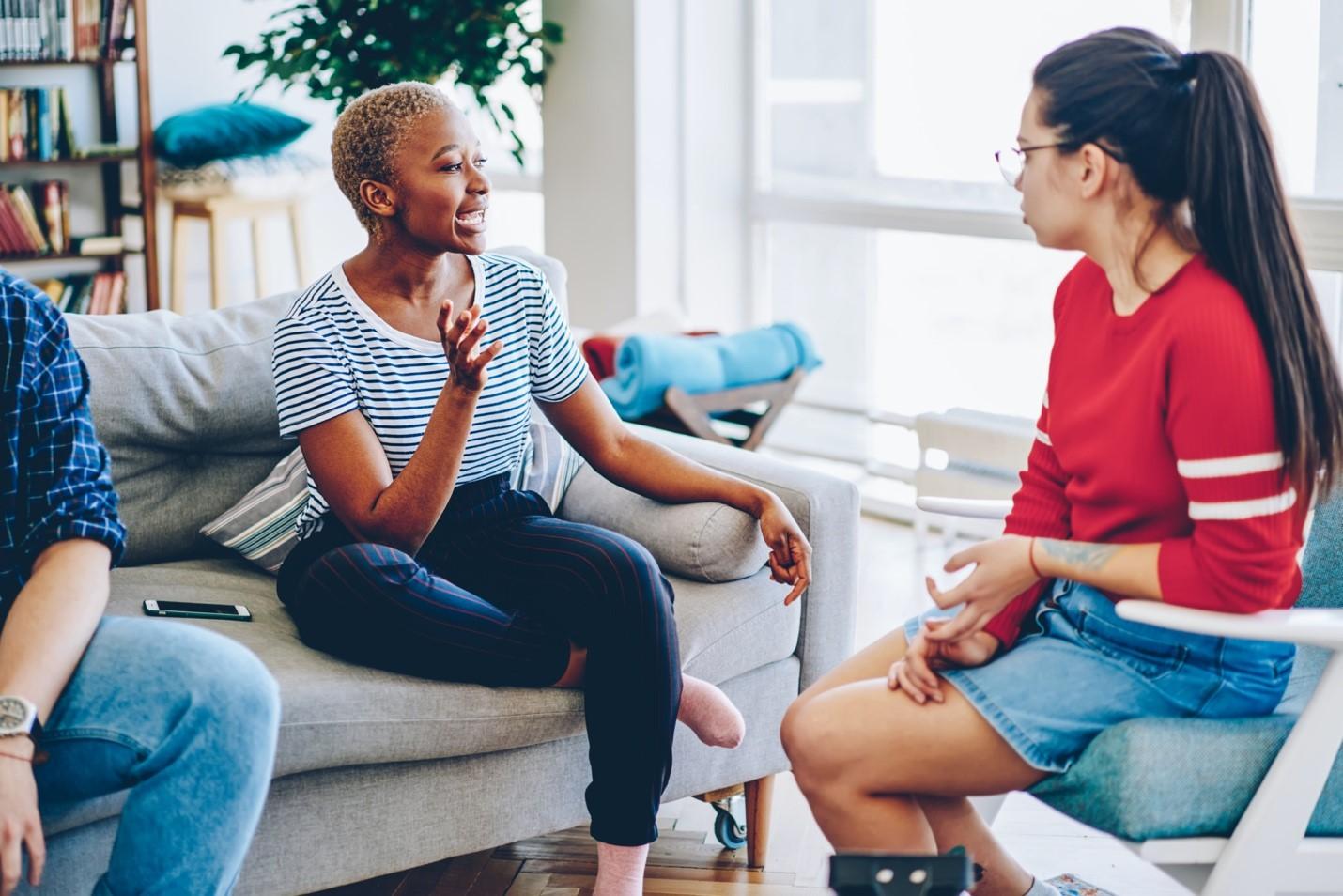How To Recommend Buteyko Without Being Pushy
Buteyko Breathing has changed your life! Now you want to share it with others but what do you say to them and how do you direct your friends and family to the joy of better health?
We all know that unsolicited advice doesn’t work well. For example, here’s what doesn’t work when bringing up the topic of proper breathing:
You: I’ve learned how to breathe properly using the Buteyko method!
Friend: That’s great! What’s the Buteyko method?
You: It’s 100% nasal breathing and learning how to stop hyperventilating. Plus, some other stuff.
Friend: Well, my breathing is great but I’m glad it’s worked for you.
You: But don’t you have asthma?
Friend: Sure, but I use my inhaler.
You: This program would be great for you….[goes into an explanation of how Buteyko helps asthmatics]
Friend: But I’m not interested. I don’t mind using my inhaler.
Both people feel awkward with this kind of conversation. Even though the Buteyko breathing method could help them, it might be hard to bring the topic up again next time you see them.
Changing Behavior Isn’t Easy
Over breathing is a harmful habit, similar to a destructive addiction. Research about helping others quit drugs shows that the most effective conversations are gentle and non-confrontational.
The University of Arizona College of Medicine has developed the Helper’s Program, which has trained thousands of people across the US to have a supportive conversation about quitting smoking.
The Helpers program teaches four types of conversations to guide someone to behavior change–in this case, improved breathing. Although Helpers was made to assist others with quitting smoking, it can be used with any behavior change.
Based on over a decade of research, the technique teaches:
· Awareness
· Understanding
· Helping
· Relating
Awareness
This means becoming aware of how the other person feels about trying a holistic approach to healing.
For example, an awareness-centered conversation might go like this:
You: Hey, how are you?
Friend: Pretty good, and you?
You: Fine. How have you been doing with your asthma lately?
Friend: It’s the same as usual. That reminds me, I have to get a refill for my inhaler today.
You: Does that work pretty well?
Friend: It’s OK. I’m used to it.
You: I’ve heard of a holistic treatment for asthma called the Buteyko Method. Have you ever heard of that?
Friend: No.
You: I’ve tried some alternative medicine. I liked Acupuncture. What do you think about alternative health treatments?
Friend: [explains her feelings on this topic]
You: That’s interesting.
What’s different about this conversation, compared to the first one? You are doing the job of listening and becoming aware. To do that, you ask open-ended questions (What do you think about alternative health treatments?) and be sure to listen without judging or giving advice (That’s interesting).
By the end of your interaction, you’ll know how your friend feels about having asthma, about using a medication, and about holistic health.
You keep the conversation focused on your friend-not on yourself.

Understanding
The next step is understanding what could motivate your friend to try Buteyko Breathing. How ready are they to change? What actions have they already taken to change?
A motivator might be as simple as, Geez, this asthma medication is expensive!
When you hear that type of statement, you are ready to say something supportive and non-judgmental, such as, I’ve heard that it just keeps going up every year rather than, if you tried Buteyko breathing, you wouldn’t need medication.
Open-ended questions you can ask to increase your understanding include:
- When did your asthma start bothering you?
- What would it feel like to get off that medication?
- What happened when you tried getting off your inhaler?
Helping
The helping step means giving resources or information to make it easier for your friend to find out more about Buteyko, and possibly make a change.
In this step, you can hand out a pre-printed card with the website information on it, loan a book like Breathe to Heal or point out a video you’ve found helpful. If you both happen to be at the Breathing Center website, you can point out sections or articles you’ve found helpful.
If you want to help someone get to know the Buteyko website, having printed cards to carry in a car or purse is a practical step. You never know when someone might want more information. When handing a card to someone it is effective to write down a blog or bio on it to personalize it.
The helping step doesn’t need to happen after awareness and understanding-it can be done first if someone mentions a desire to try an alternative health method.
As with Awareness and Understanding, the Helping step is best done when someone asks for more information.
If offering information, you can say: I know a holistic treatment for asthma that works very well. If the person asks, it’s the perfect time to write down the Breathing Center URL or hand out a card.
Relating
In this step, you let the other person know that you are a reliable resource. You can help answer questions, talk about your own experience using the Buteyko method, or just give a call to see how it’s going.
You can check back in a week or a month later-but it’s important to let the friend or acquaintance know that you are interested in their progress.
The best way to do this is to ask open-ended questions that don’t nag or pressure them, such as:
- How are you doing with the breathing techniques?
- What did you like about the Buteyko website?
It’s also important to be ready to hear, No, or I never looked at the website, while still responding in a supportive way. You can easily circle back around to the Awareness, Understanding, or Helping steps when this happens.
For example:
You: What did you like about the Buteyko website?
Friend: I never went there.
You: Oh well, I know you’re busy. How have you been doing with your asthma lately?
Friend: It’s been worse….you don’t have another card, do you?
You: Sure, here’s one. [Writes down, bio! on the card] When you go to the website, read a little bit about Dr. Buteyko. His life story was fascinating.
Friend: OK, I’ll check it out. Thanks.
You: Great, and would it be okay if I asked how you’re doing next month when we see each other again?
Friend: That’d be okay.
The relating step doesn’t mean you have to become best friends. A gentle question about progress goes a long way, as does listening whenever the person talks about health challenges or lack of progress using conventional healthcare methods.
Are you interested in helping someone learn Buteyko?
The basics of having a successful conversation include learning the Awareness, Understanding, Helping, and Relating steps.
By asking open-ended questions and listening, you will have more success.
This approach also removes the burden of explaining the whole Buteyko Method! Instead, you can use a tried-and-true technique to become more aware, understand what is motivating the other person, help him or her find resources, and check back in later.
***
If you would like to know more about the Helpers Program, or take formal online training, start here.


